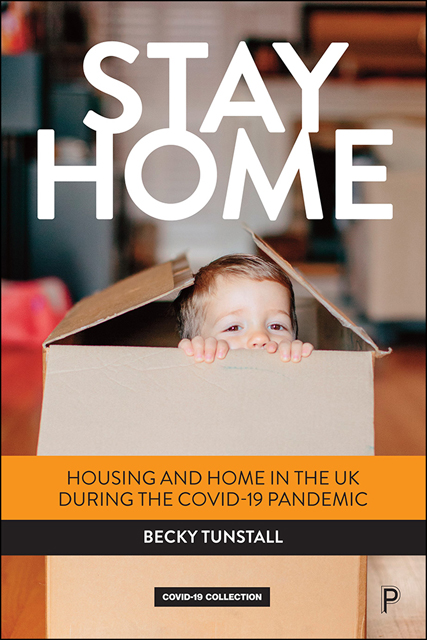Book contents
- Frontmatter
- Contents
- List of figures, tables and photos
- Acknowledgements
- 1 COVID-19, housing and home
- 2 UK households and homes before the pandemic
- 3 The pandemic and pandemic policy in the UK
- 4 People, households and time at home in the pandemic
- 5 The role of household and home in COVID-19 infection and death
- 6 Being vulnerable or ill at home in the pandemic
- 7 The impact of COVID-19 and COVID-19 policy on incomes, housing costs and housing security
- 8 The impact of COVID-19 and COVID-19 policy on the housing market
- 9 Summary and conclusions
- Appendix: The data from people aged 19, 31, 50, 62 and 74
- Notes
- References
- Index
2 - UK households and homes before the pandemic
Published online by Cambridge University Press: 20 June 2023
- Frontmatter
- Contents
- List of figures, tables and photos
- Acknowledgements
- 1 COVID-19, housing and home
- 2 UK households and homes before the pandemic
- 3 The pandemic and pandemic policy in the UK
- 4 People, households and time at home in the pandemic
- 5 The role of household and home in COVID-19 infection and death
- 6 Being vulnerable or ill at home in the pandemic
- 7 The impact of COVID-19 and COVID-19 policy on incomes, housing costs and housing security
- 8 The impact of COVID-19 and COVID-19 policy on the housing market
- 9 Summary and conclusions
- Appendix: The data from people aged 19, 31, 50, 62 and 74
- Notes
- References
- Index
Summary
UK households
Introduction
The ‘household’ is an important concept in social science, policy and daily life across the world, and the term has already been used many times in this book. It combines ideas about residence with production, consumption and sharing, for example, of income, food and care. SAGE, the Scientific Advisory Group for Emergencies, was convened to advise government on COVID-19 in January 2020. It said that households are
sites of social relationships informed by cultural values … they are part of a network of support structures of kin and care work, which carry risks of transmission, but which are also crucial to weathering economic and social shocks.
The concept of the ‘household’ took on heightened importance during the pandemic because it was used as the basic unit for regulating social interaction, initially through guidance, and then by law (see Chapter 3).
What is a household?
The ‘household’ is often taken for granted. A review of over 2,000 international articles using household data found that 97% did not define the key unit. However, there are multiple potential definitions, and UK housing policy, benefits policy and statistics each use the term differently. In practice, from the very earliest modelling by SAGE, COVID-19 research and policy has used and taken for granted the standard UK statistical definition of a household. The ONS definition of a household is ‘one person living alone, or a group of people (not necessarily related) living at the same address who share cooking facilities and share a living room, sitting room or dining area’. This includes households that have more than one home (for example, a holiday home) and where some of household members stay in a different home on a temporary basis. In addition, a person can be a member of more than one household simultaneously. However, it is difficult for survey categories to capture this complexity. Potential alternatives to relying on ‘households’ include self-identifying key contacts. The adoption of ‘bubbles’ in June 2020 reflects this idea.
Demographers note that ‘the household as defined by survey statisticians may bear little resemblance to the social unit in which people live’.
- Type
- Chapter
- Information
- Stay HomeHousing and Home in the UK during the COVID-19 Pandemic, pp. 11 - 31Publisher: Bristol University PressPrint publication year: 2022



